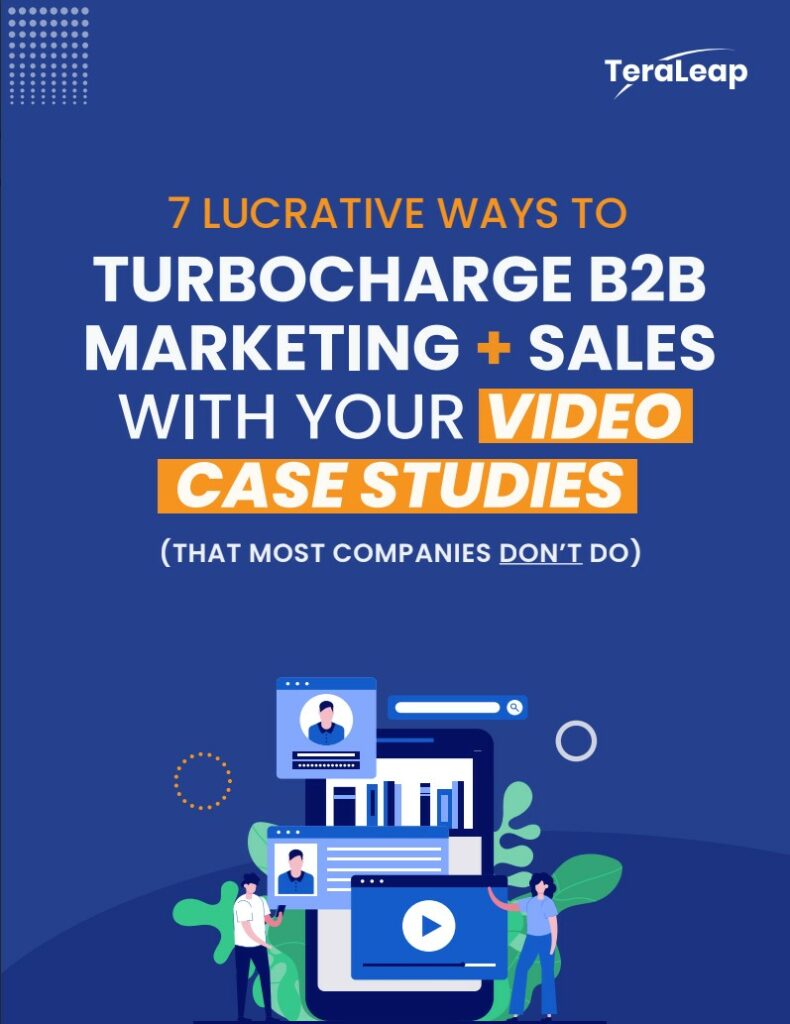Everything You Need to Know About Creating Customer Video Testimonials That Drive Business
Your business has made an incredible impact on the lives of your customers. You know it, your customers know it, but do your prospects?
Having thrilled customers who recognize your value is only helpful in increasing revenue if you can capture and share those stories with others in a compelling and easily consumed format. Customer video testimonials are the answer.
However, creating them can feel overwhelming: How do I get customers’ buy in? We all know some people are rather camera shy. Will this one project eat up my entire marketing budget? What’s the best way to capture them on video? What if it’s captured incorrectly and we get a crappy video?
We get it! We see these concerns all the time. Yet, the benefits far outweigh these quickly addressed challenges by miles. Let’s look at a few exceptional perks you can expect from including customer videos in your content strategy and sales enablement content:
- Grow brand awareness: imagine increasing engagement by 500% in your social media and email marketing campaigns? Yes, it’s possible!
- Drive increased conversions: we’re talking from ads through landing pages moving 15% up to 40% more leads through your funnels. Booya!
- Boost close rates: equip your sales teams with crucial sales enablement content and they could dramatically increase close rates by up to 41%. Your sales team will sing for joy!
Customer video testimonials are among the few rare content assets that can power up your entire marketing and sales funnel. Plus, when you capture a quality video interview with a real customer and ask the right questions, you’ve just created a treasure trove ready to be leveraged and repurposed in 50+ unique ways.
This guide will teach you everything you need to know to achieve just that; from learning why customer video testimonials leave written reviews in the dust, to best practices for creating those videos – and most importantly – how you can easily get your customers on board with the process.
Does social proof and customer testimonials really make a difference in B2B marketing?
Social proof is very important for B2C marketing but in B2B, it’s an absolute must. With the increased complexity and size of most business deals, it is normal for the buying process to take months or even years to finally purchase. Sharing success stories from your existing customers helps prospects relate more to the product and truly believe that it can solve their problems, rapidly increasing buyer confidence. This all plays a major factor in speeding up sales cycles and driving more revenue!
Hear from Josh Lowy, former CEO of now-acquired software company Hugo unpack this concept more
Still not convinced? There’s more good news to build the case for customer testimonials:
- The average customer reads 10 online reviews before making a purchase.
- Nearly 90% of people trust reviews as much as they do personal recommendations.
- More than half of people will only use a service if it has four stars or above in its reviews.
Ken Dieslman, marketing director at NanoHive, shares his view on the importance of peer-to-peer recommendations in B2B between prospect and past customers:
“[People] rely on peer-to-peer interactions and recommendations… it gives more confidence than information that comes strictly comes from a local sales rep.”
Yet, connecting past and new customers isn’t straightforward or scalable.
That’s where the power of social proof in the form of customer testimonials proves to be the weapon you’ll brandish against your competition — and against customer objections and doubt. Customer video testimonials specifically are the most effective form of social proof as they’re the closest replica of in-person communication.
What are customer testimonials? What makes a great one?
When I say ‘customer testimonial’ you probably think of a simple, standardized quote or recommendation where a person says “Company X did a great job! I totally recommend them!”
That’s NOT how we define a customer testimonial though.
What we’ve seen above is a nice statement, but the opposite of a convincing testimony of what you’ve done for them. If you stop there, you’re missing the real power that lies in the impact you’ve made in your customer’s life or business… the actual story itself. And yeah, on top of that, it also isn’t very credible.
Mankind has loved stories from the beginning of time: stories captivate us and paint a picture of what has been done and what could be – simply put, stories sell. Connect the power of a captivating story with the impact you’ve made in your customer’s life and magic happens.
The best testimonials are customer stories that are told wearing the customer’s shoes. Stories that convey their emotions and challenges, along with the excitement they felt in overcoming them — all because of using your solution and your help! You want new prospects to recognize their own concerns in an existing customer’s testimonial and perceive your business as the answer to their own problem.
High-quality customer testimonials demonstrate your impact on the customer’s business and tell a new prospect ‘We can do the same thing for you!’
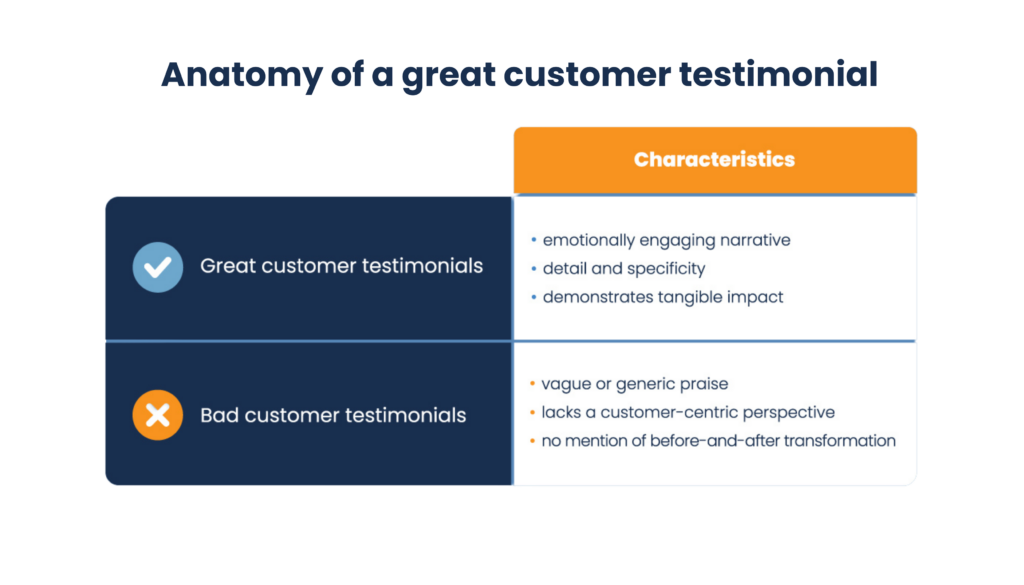
Let’s look at the difference between a great testimonial and a bad one, a little deeper.
Anatomy of a great customer testimonial:
Emotionally engaging narrative: A powerful testimonial transcends mere facts, striking a chord with readers through emotion. It takes potential customers on an authentic journey from the initial challenges and accompanying emotions — be it frustration, anxiety, or desire — to the satisfaction or relief found in your solution. By vividly conveying these emotional experiences, the testimonial taps into empathy and makes your product or service not just a logical choice, but an emotional one, too.
Detail and specificity: Good testimonials delve into specifics. They discuss particular hurdles or objectives the customer faced and elucidate precisely how your offering helped in addressing these issues. This level of detail not only adds credibility but also helps potential clients see their concerns or aspirations mirrored in the testimonial, forging a stronger connection with your product or service.
Demonstrates tangible impact: The most effective testimonials highlight measurable improvements or successes that resulted from your solution. Whether these are quantifiable outcomes (like growth in revenue, time saved, or productivity increases) or qualitative benefits (like satisfaction, ease of mind, or positive emotional impacts), a great testimonial underscores concrete changes that occurred because of your product or service.
Anatomy of a bad customer testimonial:
Vague or generic praise: Weak testimonials are often characterized by bland, non-specific approval, such as “They did a great job!”, as we saw previously. These statements, while positive, lack the persuasive power needed to sway decision-making because they don’t provide evidence and don’t relate directly to a prospect’s concerns.
Lacks a customer-centric perspective: Ineffective testimonials focus too much on the product features or technical aspects without illustrating how these elements bring value to users’ lives. They miss out on expressing the customer’s voice, emotions, and the experiential journey, which are crucial elements in forming a relatable narrative.
Omitted before-and-after transformation: Poor testimonials often neglect the “before” scenario or the contrast between the initial struggles and the post-solution success. They fail to capture the transformative impact of a product or service, making it harder for potential customers to envision the transformation they’re seeking.
But wait, there’s more…
There’s one more benefit you should know about turning simple testimonials into customer stories: they help you understand your customers better in order to predict behavior, create more engaging content, and guide overall decision-making.
Interviewing your customers is a smart shortcut to understanding their pain points while also capturing marketing content in one go. Talking directly to your customers is the best way to gather their insight, which in turn, helps you create content and messaging that ultimately resonates with them.
Hear from Jessie Bumgarner, marketing director at Cargo Chief, how gathering customer story testimonials has played a pivotal role in their marketing content
What types of customer testimonials exist and which should I use?
There are many different types of customer testimonial formats available to you, but CAREFUL – they’re not all equally effective nor interchangeable!
Text-based customer testimonials or case studies
These are some of the most common types of testimonials and you’ll see them all over the web. There are some clear benefits to text testimonials, as they’re the easiest to obtain, but this doesn’t mean they’re the most effective. Let’s take a closer look look at the format, use cases, advantages and shortcomings.
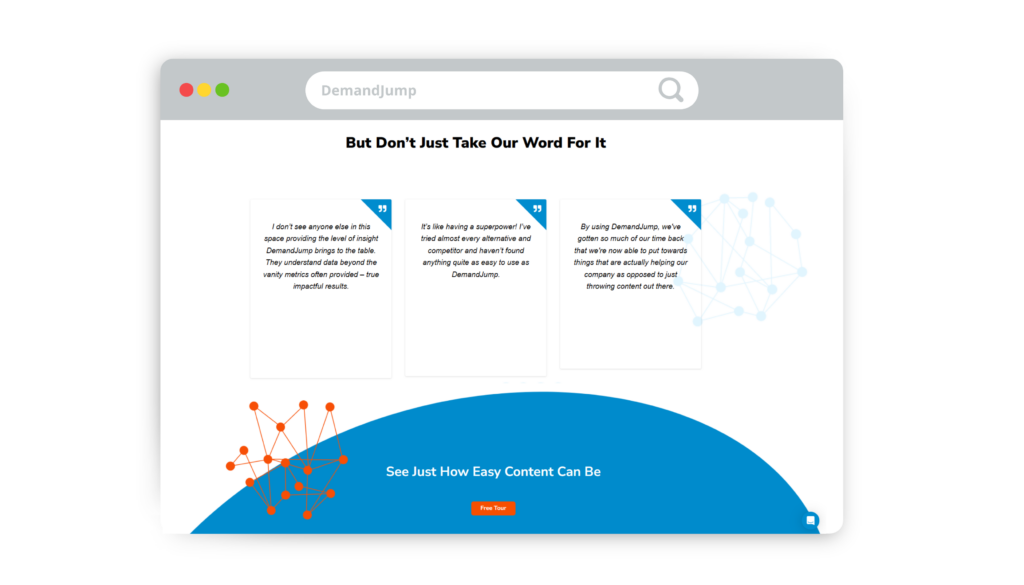
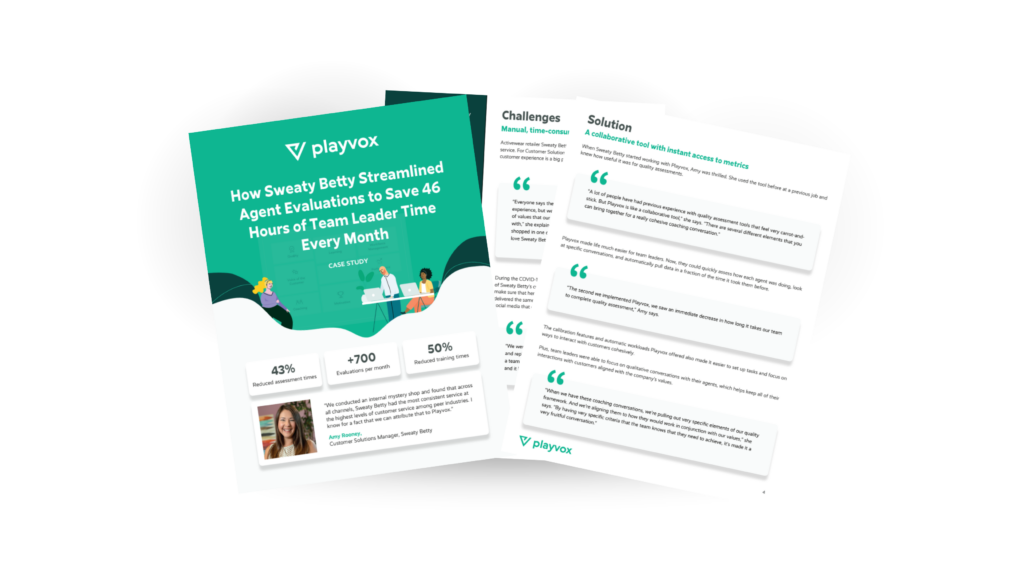
Format:
Text-based testimonials can be in the form of quotes, paragraphs, reviews or detailed case studies. Typically, they’re accompanied by the customer’s name, job title, company and occasionally a photo.
| Use Cases: | Advantages: | Shortcomings: |
|---|---|---|
| Website & landing pages: Can be featured as static text on select pages or showcased on dedicated sections like case study or review pages. | Easy to collect: Short, written testimonials can easily be obtained from customers - via email or caught in a live chat. | Limited Emotional Impact: Text testimonials can lack the emotional punch that other, more visual formats can deliver. |
| Marketing collateral: Brochures, product packages, and promotional materials can be jazzed up with relatable customer testimonials. | SEO friendly: Written content is indexable by search engines, potentially giving your search rankings a nice boost. | Authenticity Doubts: With the rise of fake reviews and AI-generated content, customers often question text-based content - which eats into its effectiveness. |
| Email marketing: Sprinkling testimonials in newsletters or follow-up emails can encourage repeat business. | Super flexible: Short, snappy quotes can be conveniently dispersed throughout your marketing campaigns and collateral. | Less engaging: Written content can be one-dimensional and lack the engagement more visual formats can offer. |
Image-based or graphic customer testimonials
Ever heard the saying “A picture is worth a thousand words”? Well, spicing up text testimonials with visuals gives them an extra kick. They’re much better at grabbing attention and stirring up an emotional response compared to text alone. However, they too have some limitations. Let’s take a closer look.
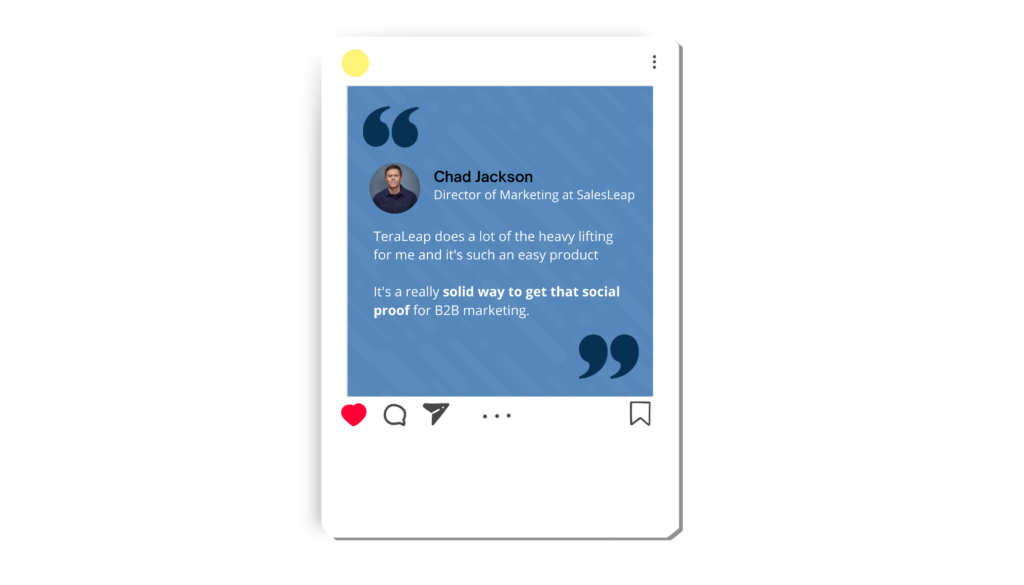
Format:
These testimonials feature a customer’s photo combined with a written statement, and are typically crafted using graphic design tools or software.
| Use Cases: | Advantages: | Shortcomings: |
|---|---|---|
| Social Media: Perfect for sharing on platforms like Instagram, Linkedin, and Facebook due to their visual appeal. | Enhanced Credibility: Photos of actual customers boost authenticity and trust. | Time-Consuming: Creating graphic testimonials requires more effort and time compared to text-based ones. |
| Website Testimonials: Enhance the look and feel of your website by merging text and visuals. | Aesthetically Pleasing: Captivating and suitable for visually-focused marketing strategies. | May Require Permission: Gathering customer photos and obtaining their consent to use them can be a challenging and slow process. |
| Printed Materials: Great for adding extra flair to print advertisements, brochures, and posters. | Higher Engagement: Professionally designed graphics with images tend to perform better than text alone, especially on social media. | Limited Emotional Impact: Even though they're more impactful than simple text testimonials, they still struggle to evoke as much emotion as some other formats. |
In-person or live customer testimonials
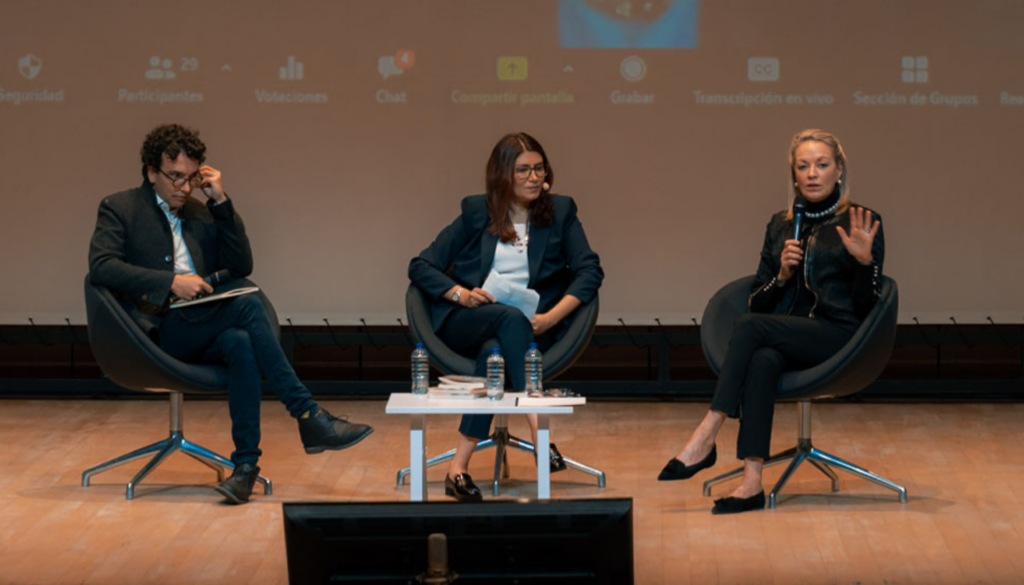
Source: Uniandes
Allowing potential customers to hear from or meet your satisfied customers in person is an excellent way to assure them that your business is the right choice for them. People tend to respond better to faces than words. It’s the emotional aspect that can help secure the conversions you’re after.
Format:
Live testimonials involve customers sharing their experiences directly in-person or through live presentations to an audience or prospective customer.
| Use Cases: | Advantages: | Shortcomings: |
|---|---|---|
| Conferences and Events: Perfect scenarios to invite customers to share their experiences live on stage. | Real-Time Interaction: Live testimonials allow for real-time engagement with the audience, including the chance to ask questions. | Limited Control: Live testimonials are unpredictable and unplanned, potentially leading to unintended or content that misses the point. |
| Webinars or Livestreams: Live testimonials can be included as part of a webinar series or an online event. They can also be recorded to reach a broader audience. | Authenticity: They ooze authenticity as customers speak for themselves, live. | Technical Challenges: Issues with audio, video, or connectivity can get in the way. |
| One-on-One: Coordinating direct interactions between a customer and a prospect, either in-person or over the phone. | Personal Touch: The real-time, personal nature of live testimonials can create emotional bonds and personal connections. | Customer Time: Getting your customers to block time when you need them may be challenging |
Customer Video Testimonials
Video testimonials are the Swiss army knife of testimonials. They combine the emotional impact of image testimonials, the eloquence of written testimonials, and the authenticity of live testimonials in one package. While production can be challenging, having a good plan and solution in place can ensure it’s efficient and doesn’t consume all your time and resources.
Format:
Customer video testimonials involve customers sharing their story and experiences on video.
They can range from short clips to longer, more detailed interviews.
| Use Cases: | Advantages: | Shortcomings: |
|---|---|---|
| Website Integration: Featured on product and service pages to increase trust and conversions while also a dedicated customer success page. | High impact: video testimonials are the best way to effectively convey emotion and authenticity in a scalable format. | Production costs: creating high-quality video testimonials can be expensive. |
| Social media: share them on platforms like LinkedIn, YouTube, TikTok, Facebook, and Instagram. | Engaging storytelling: the visual medium of video allows for more compelling storytelling that entertains while educating the audience. | Time-consuming: Video production and the editing process could require more time than the other formats. |
| Email Marketing: add them to your sales or marketing drip campaigns to engage prospects, generate demand and close deals. | Shareability & versatility: videos is the most shared format today, making it easier to reach a wider audience while the content can be repurposed a multitude of ways. | Technical challenges: Issues with recording, sound quality, or lighting can affect the final result. |
No matter which format you choose, testimonials play an essential role in building trust in your product or solution, that it can solve a problem and deliver results.
To what degree and how quickly does that testimonial build trust with your prospects… well, that is the major difference.
As outlined, the greatest trust created is a testimonial given live and in-person. Unfortunately in-person doesn’t scale by itself and cannot be used across your marketing efforts. So your next most trust-building testimonial is in video format. Image and text testimonials are the most common across the web because they are the easiest to get. They’re table stakes.
If you truly want to accelerate trust and stand out from your competitors, then find ways to include more in-person or video testimonials in your marketing strategy.
Written Case Studies vs. Video Case Studies
It may be easier to create written content, but is it as effective? We believe written case studies as you know them are at death’s door. Why? There are three main reasons: skepticism of written content, the value of emotion and nonverbal communication, and today’s rising demand for video content. Let’s unpack each one of these.
Skepticism of written content
Customers are savvy, they know written customer testimonials are written by marketers. Couple this knowledge with a widespread proliferation of fake reviews and the rise of ChatGPT, and you end up with a mass distrust of written content overall.
Video testimonials are the best proxy to replicate the live experience. On top of this, ever since the pandemic, we crave face-to-face communication more than ever before.
Video testimonials are the ideal format for authentic stories that hit home and beat back skepticism head-on.
The value of emotion and nonverbal communication
While words are powerful, they’re often inadequate. The way information is delivered is just as crucial as the content itself because text alone doesn’t convey tone or emotion. We rely on visual cues such as facial expressions and body language to complement our emotional perception and enhance our judgment capacity. It underpins our ability to determine the truth and make informed decisions. This wealth of non-verbal communication is absent in written content.
Video testimonials harness the power of these non-verbal, emotional indications, allowing prospects to immediately empathize with your customers’ narratives. The tone and inflection of a speaker’s voice directly stimulate the emotive and decision-making parts of our brain. In 10-20 seconds, a customer can significantly express their feelings and experiences before and after engaging with a product. These brief video clips provide far more value than 1000-2000 words, amplifying emotion and information at scale.
The rise of video content
If you’re making prospects read written case studies, you might be adding friction to the buying process.
We live in a video-first world. It’s easy and passive to consume, as evidenced by platforms like TikTok, Instagram Reels, and YouTube Shorts. This video trend extends to our professional lives.
Prospects conduct extensive research before contacting us. What they encounter and how they engage with our content matters. They prefer a format familiar from their personal lives.
What they see on our website (or our competitors’) influences their decision-making process. Customer videos are invaluable for marketers to reduce friction, helping prospects engage with our content and choose us as the preferred solution.
What is the easiest way to collect video testimonials?
There are 3 ways you can collect video testimonials from your customers: on-location video crew, remote video production, self-recording software.
Do you want to know the easiest, the best quality, or the best mix?
Let’s evaluate each one:
On-Location Video Crew
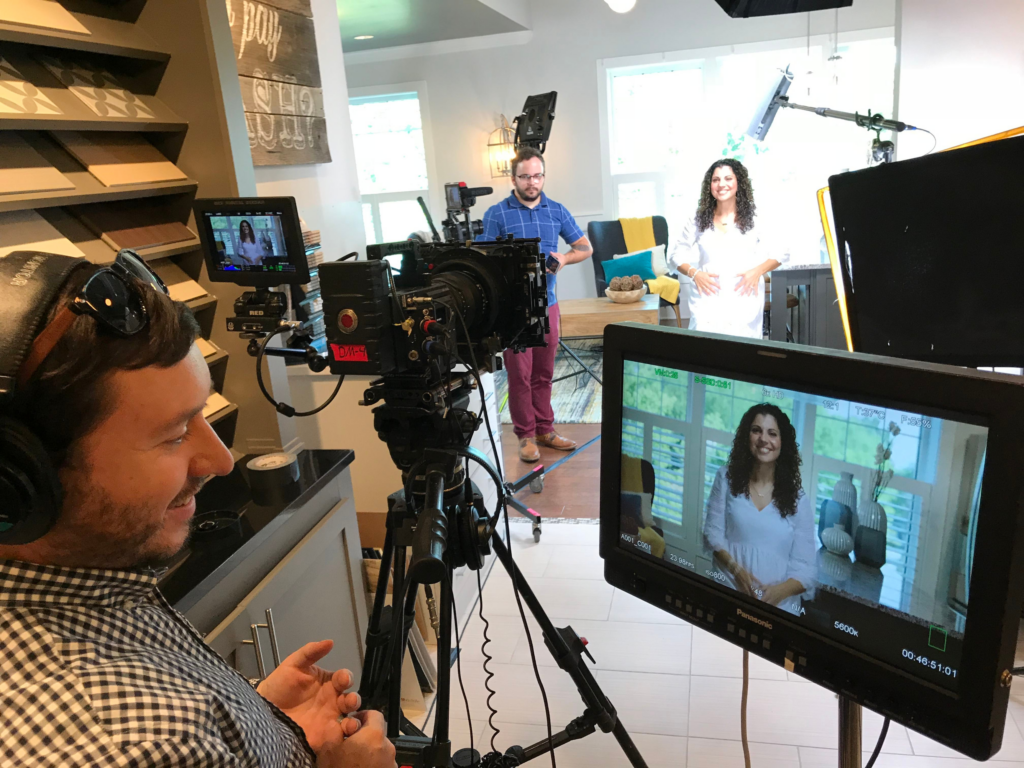
If quality is your top priority for video testimonials, consider hiring a professional video crew and sending them to your customer’s site. Typically, this involves a two to three-person camera crew equipped with multiple professional cameras, lighting, and microphones. The crew’s role includes making your customer feel at ease and conducting interviews to extract compelling content and stories.
What’s required: Identify a professional team or studio with expertise in this area, either located near your customer or prepared to cover their travel expenses. Alternatively, you can ask your customers to visit the studio.
Pros: This approach delivers the highest quality in terms of video and audio, while ensuring exceptional content due to the controlled interview process. It allows for the capture of a substantial amount of content, including both interview footage and additional supporting visuals (b-roll).
Cons: It is the most expensive option and demands significant coordination and time from your customer. Since it is highly produced and polished, there is a risk of it appearing less authentic and potentially leaning toward artificial or contrived, depending on the execution.
Self-Recording Software

This is the simplest of the three options. You send a link for someone to record using their smartphone or webcam. It’s particularly effective for capturing user-generated content at scale.
What’s required: Choose a software platform and identify willing customers who can record content independently.
Pros: Minimal time investment – you only need to set it up and share links. It’s user-friendly for customers to record at their convenience. Depending on the software used, you can provide prompts to guide specific responses.
Cons: Quality is a primary concern. You lack control over recording conditions, audio quality, video quality, and content. While you can offer prompts, individuals will still express themselves as they see fit. This option also lacks the versatility and content repurposing potential of a full customer interview.
Remote Video Production
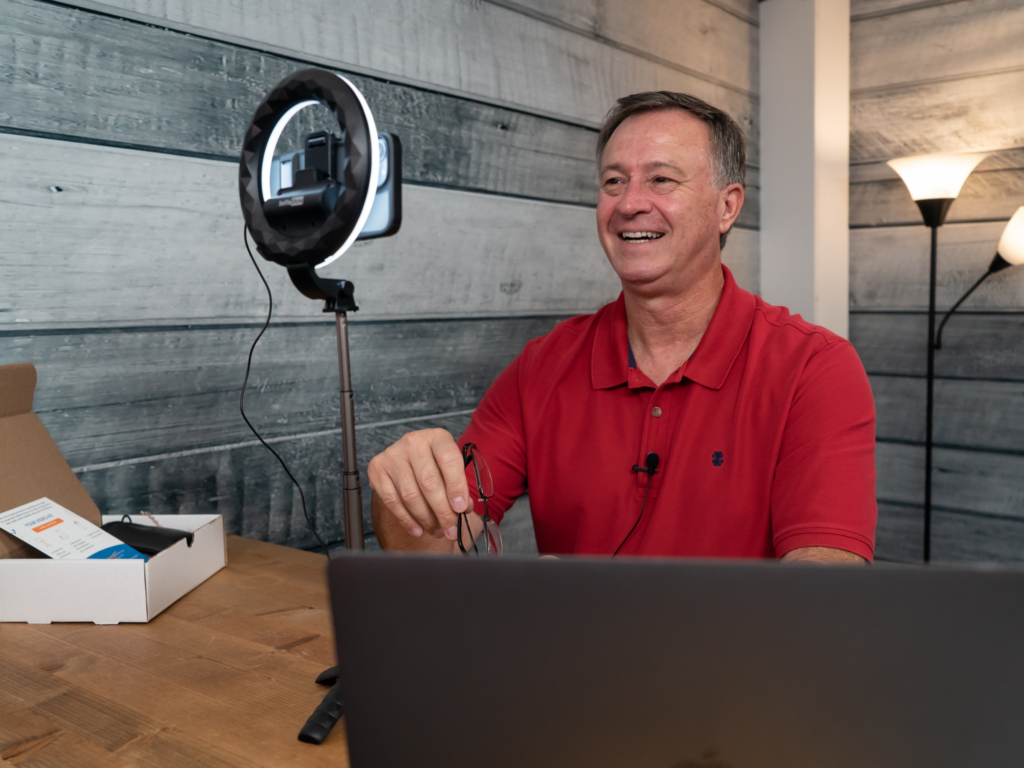
For a perfect blend of quality and efficiency, consider remote video production. This approach utilizes software and specific equipment to conduct remote interviews and capture your customer’s insights from anywhere in the world, eliminating the need for an on-site crew.
What’s needed: To execute this effectively, you require someone with technical expertise who can manage the session, assist the customer in setting up for a high-quality recording, and conduct a successful interview to extract valuable insights.
Pros: Remarkably efficient for capturing customers worldwide, with the potential for high-quality output based on the software and technology used. It minimizes the time commitment from your customers. It also offers authenticity by capturing them in their natural environment, free from bulky cameras and lights that can induce self-consciousness, fostering a more genuine and relaxed discussion.
Cons: You must explore and understand the available software and technology options. Relying solely on platforms like Zoom can result in subpar quality. Furthermore, without an effective interviewer and someone knowledgeable about technology, you risk producing substandard content with unusable video and audio.
Want to start capturing video testimonials but not sure which method fits your needs?
How do I get my customers to agree to do a video testimonial?
You have an outstanding product, satisfied customers, exceptional service, and a wealth of customer success stories to share. The only challenge? You need your customers to be willing to assist you in telling those stories.
Your clients are likely to experience some reluctance and apprehension, even if you handle this well. It’s natural for people to avoid extra work and potential embarrassment. Therefore, you must make it as easy as possible for them to say yes. The way you approach making the request is crucial.
We’ve identified three key elements in securing a “Yes” from your customer for a video testimonial:
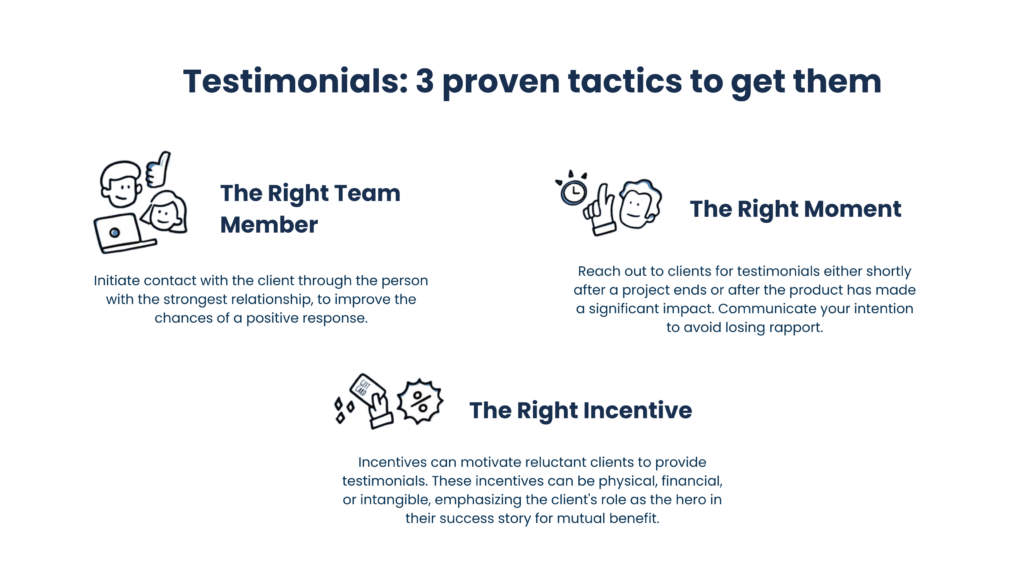
1. Selecting the right team member to make the request.
Initiate contact with the client through the person with the strongest relationship to improve the chances of a positive response.
2. Timing your request appropriately.
Reach out to a client for a testimonial as soon as your solution has made a significant impact. For optimal results, obtain consent during contracting or onboarding.
3. Offering the right incentive to secure a positive response.
Motivating busy clients to provide testimonials is crucial. This can be achieved through various incentives such as physical rewards (i.e. swag), financial rewards (gift cards or discounts), or intangible rewards (emphasizing how sharing their story can help others or how it can promote their business).
Get the testimonial request guide & email templates
Want more on this topic? We’ve put together a comprehensive guide along with designed 5 email templates guiding you through the entire process. You can pick the one that most closely matches the situation you’re in which can improve your chances of getting the yes. Click here to get access the guide and templates.
5 Dos and Don’ts for the Perfect Customer Testimonial Video
Great! You convinced your client to tell their story on camera. And now what? Here are some best practices, including dos and don’ts, to ensure your video testimonial is perfect:
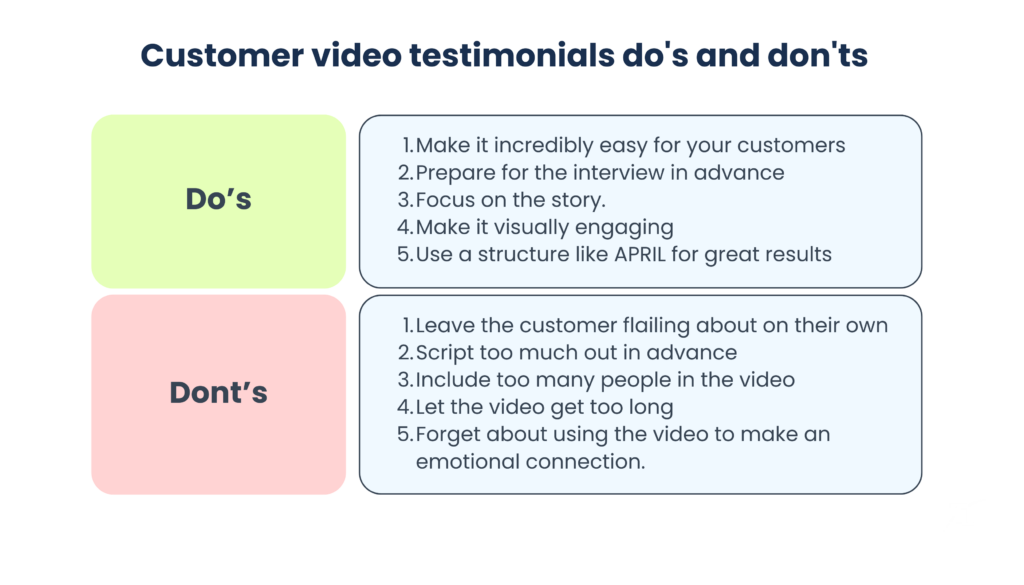
Do: make it incredibly easy for your customers
Clearly communicating the testimonial giving a clear and structured process to your customer is essential. The best scenario is where they simply need to show up and talk while everything else is taken care of behind the scenes. A few suggestions of what to include in your communications:
- How the video testimonial will be filmed (keep it simple to start, with the option for them to ask more details later)
- What they need to do to prepare (hopefully very little to nothing)
- How much time it will take from them (ideally as little as possible)
A lack of a clear testimonial process or inadequate communication can spoil a great opportunity. Obtaining an initial “yes” doesn’t guarantee success if the customer is uncertain about the process.
Do: Prepare a well-crafted question list in advance
Avoid improvising during the customer interview. Instead, prepare questions that guide customers from their situation before using your solution to the success they’ve achieved.
As a general rule for customer interviews, we advise against sharing all your questions in advance, unless it’s requested or required. Providing all questions upfront may introduce unnecessary friction and lead to scripted, less authentic responses.
Do: Focus on the story
We all appreciate a compelling story, and it’s a proven fact that great stories sell. When you can narrate how you empowered your customer to transition from a challenging and painful situation to becoming the hero of their own story through your solution, you capture your prospects’ imagination and ignite their desire for a similar transformation. Remember to embrace this concept both during the interview and when editing the final video content.
Do: Make it visually engaging
The most effective video testimonials incorporate supplementary footage, graphics, and other visual elements to enhance their customers’ stories. A video with only a single element throughout, such as slides or a person speaking, doesn’t engage viewers as effectively as when various supporting visuals are used to convey key concepts and the overall story.
Do: use a story structure like APRIL for better results
When sifting through all the interview footage with your customer, you’ll need to decide how you want to tell the story. There are many formats and fromulas for telling compelling stories. At TeraLeap, we often leverage a framework we call APRIL, which stands for:
- Attention-grabbing introduction for context
- Present a relatable hero
- Reveal a relatable problem
- Illustrate results
- Leave a Call To Action
Whether you use the A.P.R.I.L. framework or other popular ones like P.S.R. (Problem, Solution, Result), or D.O.S. (Desire, Obstacle, Solution), editing the raw footage into a clear and compelling story structure will dramatically improve your watch time and overall conversion power.
Don’t: leave the customer flailing or go off on tangents
An interviewer’s role is to steer the conversation. If your customer veers off track, gently guide the discussion back to the main point. Be prepared to prompt the customer for further details or provide cues if their responses are too brief or if they struggle to express themselves. Here are two quick tips:
1. Create a bulleted list of preferred answers, key phrases, or essential points that you want them to address. Refer to it often to help you and your customer stay on course.
2. After they provide a concise answer, follow up with a “Why is that?” question to delve deeper and uncover what truly matters to them.
Don’t: script too much out in advance
While we recommended creating a bulleted list of potential answers, it’s important to note that we do not advise scripting the entire interview word for word. Doing so can make the customer appear rigid and artificial on video. Similarly, avoid having the customer write their own script, as it can lead to them becoming overly rigid or frustrated if they can’t deliver it flawlessly. Instead, provide a solid framework for the interview and allow the conversation to flow naturally.
Don’t: include too many people in the video
You or your customer might consider involving multiple individuals in the testimonial, but sometimes even two people can be too many, especially if one person dominates the conversation. Additionally, having multiple people on screen simultaneously can result in one person appearing disengaged or being distracting to the viewer. While there can be benefits to hearing multiple perspectives, potentially enhancing the final story, if you do decide to interview multiple individuals, the best approach is to record them individually. This approach sidesteps the aforementioned challenges and grants you full control over how much of each person’s content you want to include in the final video.
Don’t: let the video get too long
While there are occasions suitable for longer videos, video testimonials generally don’t fall into that category. Raw interviews typically run between 10 to 30 minutes, but the optimal length for a final edited video is usually 2 minutes or shorter. If you have a highly emotional story with compelling visuals, you might extend it slightly, but be aware that longer videos risk losing the audience’s attention. A common challenge is having an abundance of valuable content that’s difficult to cut down. The solution? Create more videos or transform the transcript into a written piece for those who prefer reading. Provide multiple content options, allowing prospects to choose how they want to consume the information.
Don’t: forget about using the video to make an emotional connection
A compelling video testimonial isn’t a formal lecture; it’s a narrative that allows potential customers to follow an existing customer’s journey and the impact your solution had. What draws people into stories and makes them resonate in the end? Emotions. Even in seemingly dry B2B scenarios, it’s essential to invest time in uncovering the emotional aspects of every story. To make customer testimonials more emotional, ensure they describe the situation before your collaboration. Help them recall and express on camera the frustration, anger, or even despair they experienced. The stronger the negative emotions captured regarding the “before” situation, the more it engages your prospects, piquing their interest in hearing how these issues were resolved.
Six examples of video customer testimonials you can learn from
Before you embark on creating your own video testimonial, we think it’s a wise idea to examine existing examples for inspiration and an understanding of the possibilities. We’ve compiled six video testimonial examples, offering our insights on each one. For each example, we specify the format used for capturing it, estimate potential costs (based on our experience), highlight its strengths, and suggest areas for improvement.
Monday.com partnership with Nissan
- Solution used: On-Location recording with video crew
- Estimated Cost: $20K- $50K
- GOOD: High quality recording, stimulating b-roll (supportive non-speaking footage), quick paced editing, but this one has even more perspectives shared. With multiple people interviewed indivdiually, it provides several perspectives into the impact Monday.com has had on their business, with some nice emotion coming through. This one takes time to show the overall features used and resulting benefits Nissan has achieved with the software platform.
- BAD: Right at 3 minutes, we’re reaching the top amount I’d recommend for a video testimonial. Aside from that, not much can be said negatively about the quality of the customer video. The biggest challenge with this I could imagine was the process to get this all scheduled, captured, put together, and then approved by Nissan. This definitely was a major production to undertake and a large budget needed to accomplish it.
ClassPass testimonial for HubSpot
- Solution used: On-Location recording with video crew
- Estimated Cost: $10K- $20K
- GOOD: High quality recording with lots of visually stimulating b-roll shots, quick paced editing style with subtle screen recording integration keeps the energy going with the total length under 2 minutes, and the story is more engaging to hear from the two different perspectives.
- BAD: The folks speaking are a bit stiff and I don’t feel a whole lot of emotion from them. Also the editing potentially could be too fast paced to allow any of the underlying story to sink in (i.e. entertaining to watch but may not leave you with any significant clear understanding of what was the major challenge and the outcome achieved).
Shell and Pixaera joint video case study
- Solution used: remote video production
- Estimated Cost: $2-3K
- GOOD: Decent amount of supporting visuals from the platform used to enhance the story. The emotion and passion of the interviewee along with the impact of the solution came across nicely. The text on screen clearly outlined the narrative and broke up the talking head footage while the music added to the emotional setting.
- BAD: It takes some time to groove into the story. Starting with an engaging clip rather than a title slide would have been more captivating. Using text slides to emphasize key concepts rather than the specific questions would have enhanced the video. Additionally, the ending felt somewhat abrupt.
Franchise owner testimonial of Redline Athletics
- Solution used: remote video production
- Estimated Cost: $1K- $2K
- GOOD: Engaging story between two co-franchise owners, with simple but nicely branded background. Engaging clip at the front to pull you in. The full screen text callouts break up the interview footage and highlight the key points that are stated. The integration of existing b-roll footage towards the end adds more visual stimulation. The length is under 2 minutes which keeps it to the point.
- BAD: It could benefit from more b-roll footage or other visuals throughout to keep it more visually stimulating to watch. Also it could use more content focused on the challenges they’ve faced and specificity on the value they’ve received from Redline.
Zasha testimonial about Sugar Shift Probiotics
- Solution used: self-recording software
- Estimated Cost: $0 – $250
- GOOD: It’s relatively short but still articulates an overall story and value of the product. You can hear decently and the lighting is okay. The fact she’s holding the product makes it slightly more engaging. Overall it’s a good authentic short testimonial.
- BAD: You can tell someone is holding her phone, so it’s shaky. There is really no editing, so it’s not visually stimulating and the storytelling is limited. It starts slow with a title slide and her intro. The story itself is a little one dimensional in what we know of her before and after states, the product’s features and overall value. Definitely leans towards a testimonial statement rather than a customer story.
Ken testimonial for Justin Welsh
- Solution used: self-recording software
- Estimated Cost: $0 – $100
- GOOD: It’s relatively short but still articulates an overall story and value of the product (the challenges before and what he felt after). You can hear him okay. Overall it’s a good authentic short testimonial.
- BAD: This is very low resolution quality webcam footage. There is no editing, so it’s not visually stimulating and the storytelling is limited. He is a little repetitive and the story itself is a one dimensional in what we know of him, the product’s features and overall value received. This is more of a testimonial statement rather than a customer story.
All of these examples serve as social proof and can contribute to building trust. Your choice of style should align with your business and customer base. In B2C, self-recorded user-generated content (UGC) is more prevalent, while in B2B, higher-quality interview formats are typically favored. If your audience is a mix of both, a layered approach that combines multiple styles may be a wise strategy.
Should I invest in video testimonials?
When considering where to allocate your marketing budget, you have numerous options. Are video testimonials the right tactic for your investment? To determine their effectiveness in your marketing efforts, let’s explore their impact across various industry examples.
A nice boost to your email campaign engagement
Mark Currier, the marketing director at CLD, a pharmaceutical training company, introduced video testimonials into their email campaigns. This resulted in a remarkable 500% increase in click-through rates compared to campaigns without testimonials. The success was attributed to the significant interest from prospects in real individuals sharing their stories, especially stories that addressed challenges similar to what they were experiencing and how CLD could help overcome them. A pro tip: an attention-grabbing thumbnail image and headline text positioned near the image are essential for achieving such high click-through rates.
A multiplier for your landing page conversions
Drew Detzler, the CMO at DemandJump, a SaaS company in the SEO/marketing sector, experienced a 15% boost in organic conversion rates by incorporating a customer video testimonial. This success was attributed to the accelerated trust-building effect that such videos had on website visitors, which expedited the transition of leads from the awareness stage to the desire stage. A pro tip: the placement and presentation of this video on the landing page can significantly impact its effectiveness.
A catalyst for social post engagement
Jodi, the marketing manager at CycleLabs, a technology company in the supply chain sector, witnessed a remarkable 5X increase in engagement on their social media posts that featured customer videos. She credited this to the visual format of the video content and the immediate connection between peers, as well as the interest in their customers’ achievements. Since most of their content was previously corporate marketing messaging, introducing content from customers led to a significant boost in engagement. A pro tip: to optimize engagement with customer videos on social media, ensure they are tailored for each platform, rather than posting the same video used on your website.
An uplift for ad campaign CTR
Luke, CMO at GreenFig (an educational company in the e-learning space) saw a 40% increase in their click-through rate on their ad campaigns that contained optimized customer video content. He attributed this success to the compelling visual nature and customer-led language of these customer stories in video format that increased the interest in their target audience to click to learn more. Basically, engagement increased when leads saw easily consumed content that had compelling message, with built-in social proof. Pro tip: just like social media, ads need to be properly formatted to achieve this kind of engagement and for best results, test multiple variations with different headlines.
Already have some testimonials but not sure of all the ways you can leverage them?
Take our quick quiz and identify the gaps in your company’s testimonial content strategy.
There’s more…
We have seen plenty more success stories of using video testimonials like the above, such as:
- Reducing sales cycle length by as much as 60%
- Doubling RFP proposal engagement rate
- Contributing up to 4.8X return on ad spend
The bottom line is this: social proof is an essential element to your marketing campaigns, building trust and credibility for your business by showing how your product or service has helped real customers solve their problems. There are many formats of social proof like text, image, or live testimonials, but capturing them as video testimonials is the best option because they are the most engaging, authentic, emotional, and verstile compared to any other format.
As demonstrated by the case studies above, investing in customer videos goes a long way: When used strategically, they have the power to enhance relevant marketing KPIs and overall cross-channel performance.
Curios to see how easy it is to create customer video testimonials and use them inyour upcoming marketing campaign?? Schedule a call with our team to see how today.




